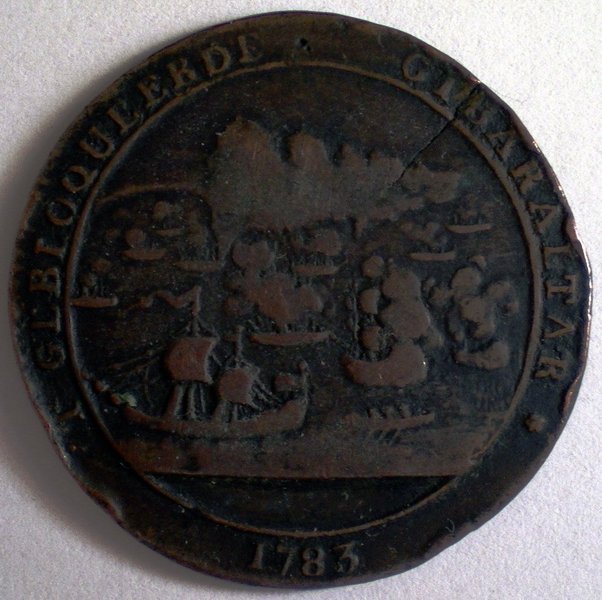Dutch Medallion commemorating the blockade of Gibraltar 1783

- Title
- Dutch Medallion commemorating the blockade of Gibraltar 1783
On 28 August 1782 Royal George was preparing to sail with Admiral Howe's fleet on another relief of Gibraltar. The ships were anchored at Spithead to take on supplies. Most of her complement were aboard ship, as were a large number of workmen to speed the repairs. There were also an estimated 200–300 relatives visiting the officers and men, 100–200 "ladies from the Point [at Portsmouth], who, though seeking neither husbands or fathers, yet visit our newly arrived ships of war", and a number of merchants and traders come to sell their wares to the seamen. The reason most of her complement were aboard was because of fear of desertion: all shore leave had been canceled. Accordingly, every crew member then assigned to the vessel was aboard it when it sank, except for a detachment of sixty marines sent ashore that morning. The exact number of the total crew on board is unknown, but is estimated to be around 1,200.
At seven o'clock on the morning of 29 August work on the hull was carried out and Royal George was heeled over by rolling the ship's starboard guns into the centreline of the ship. This caused the ship to tilt over in the water to port. Further, the loading of a large number of casks of rum on the now-low port side created additional and, it turned out, unstable weight. The ship was heeled over too far, passing her centre of gravity. Realising that the ship was settling in the water, the ship's carpenter informed the lieutenant of the watch, Monin Hollingbery, and asked him to beat the drum to signal to the men to right the ship. The officer refused. As the situation worsened, the carpenter implored the officer a second time. A second time he was refused. The carpenter then took his concern directly to the ship's captain, who agreed with him and gave the order to move the guns back into position. By this time, however, the ship had already taken on too much water through its port-side gun ports, and the drum was never sounded. The ship tilted heavily to port, causing a sudden inrush of water and a burst of air out the starboard side. The barge along the port side which had been unloading the rum was caught in the masts as the ship turned, briefly delaying the sinking, but losing most of her crew. Royal George quickly filled with water and sank, taking with her around 900 people, including up to 300 women and 60 children who were visiting the ship in harbour. 255 people were saved, including eleven women and one child. Some escaped by running up the rigging, while others were picked up by boats from other vessels. Kempenfelt was writing in his cabin when the ship sank; the cabin doors had jammed because of the ship's heeling and he perished. Waghorn was injured and thrown into the water, but he was rescued. The carpenter survived the sinking, but died less than a day later, never having regained consciousness. Hollingbery also survived.
Many of the victims were washed ashore at Ryde, Isle of Wight, where they were buried in a mass grave that stretched along the beach. This land was reclaimed in the development of a Victorian esplanade and is now occupied by the streets and properties of Ryde Esplanade and The Strand.
Wikipedia